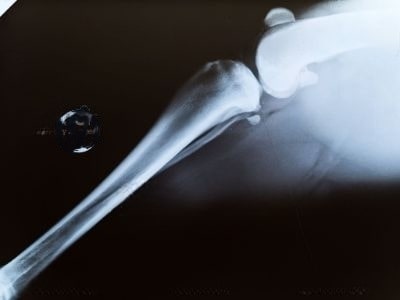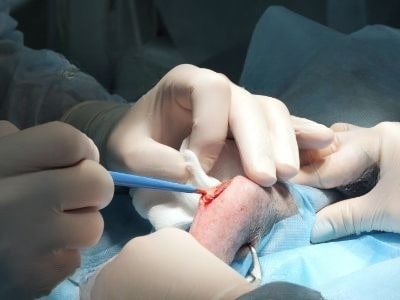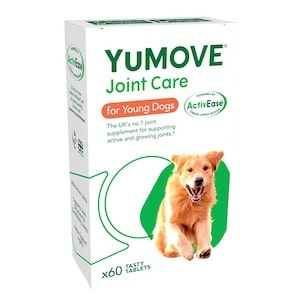Rupture or tearing of the cranial cruciate ligament (CCL) is a common knee injury in dogs. The cause for such injuries is when a dog runs and suddenly changes direction. This puts the majority of the pressure on the knee joint and causes the joint to rupture. The cruciate ligament rupture is painful and the knee joint becomes quite unstable.
Humans also have such ruptures (ACL) and treatment for such injuries is expensive. So, if your dog has suffered this injury you probably know that the surgical procedure for treating such issues is going to be costly. So, How much will a Cruciate Ligament Dog Surgery Cost in the UK?
You Might Also Like:
Cruciate Ligament Dog Surgery Cost
The cost of surgery for cruciate ligament injury in dogs can fall between £2,000 and £5,000 per knee. Yes, you read that right. Per knee! In fact, you can expect the additional charges to pile up post-surgery.
But, why such high costs? Well, the short answer is the sensitivity of the area and the severity of the injury. To understand better, let’s get into the details of this injury.
Symptoms of Cruciate Ligament Injury
The pain of cruciate ligament injuries in dogs makes them behave radically and if you observe their body language you will see they are suffering. If there is a tear in the cruciate ligament you will notice the following symptoms in your furry friend:
- Limping or lameness
- Walking on three legs
- Difficulty while sitting
- Can’t easily stand up after sitting for a long time
- A sudden drop in energy levels
Causes for the Cranial Cruciate Ligament Injury
There are many reasons why your dog may have torn their cranial ligament. Here are some of the prominent reasons and factors that you need to know and consider:
- Age – older dogs are more likely to suffer from a tear in their ligament.
- Routine – physical activities such as walking, jumping, and running will cause a tear in the joints or the ligament.
- Obesity – an overweight dog probably has the highest chance of suffering this injury. Because excessive body weight puts pressure on the joints and the ligament of the dog. As a result, there is often a risk of their bones rupturing and sustaining a ligament injury.
- Breeding strategies – poor breeding strategies can make dogs inherit some underlying genetic conditions since birth. These conditions can elevate the issues and also have a significant impact on their bone structure. For instance, dogs who have hip dysplasia genetic condition are prone to have cruciate ligament tears. As a result, it’s quite possible for newborn pups to have ligament injuries if such a dog is bred.
- Health – if the dogs are not healthy i.e. not getting enough exercise or bad eating habits will make their bodies weak (less energetic). Their bone joints will tweak at the slightest inconvenience because of their fitness.
Cranial Cruciate Ligament Dog – Diagnosis

An orthopaedic surgeon will conduct the examination for diagnosing a CCL tear. They will simply start by instructing you to walk your dog a bit, make them sit down and perform a relative activity. This will help them identify the areas of discomfort and proceed accordingly.
The standard method will involve them conducting a tibial thrust test. Here the surgeon will try and establish a specific movement. This means you will see an abnormal movement of the lower leg bone i.e. tibia and the thigh bone (femur) will suggest some laxity in the knee joint. In addition, you may also see the surgeon conduct cranial drawer tests and tests for patella taxation.
The diagnosis will provide the severity of the ruptured bone i.e. whether it’s a partial tear or a full tear. Regardless, there is a further necessity to get their other tests done. These tests mainly involve- getting an X-ray and some MRI Scans. The X-rays and the MRI will not only help in knowing the tear in the joints but, also help in ruling out other causes for lameness i.e. hip dysplasia, limb deformity or bone disease.
Cranial cruciate ligament treatment
In general, there are many treatment options available for CCL and while there is a non-surgical option available, vets or surgeons will recommend or insist on going with the surgical option. Let’s see why.
- Non-surgical treatment
In the non-surgical method, the vet will suggest you use anti-inflammatory painkillers or leverage different non-surgical approaches such as – physiotherapy, body weight management, or exercise to deal with the issue.
While the treatment seems fine, the results, are not so much. The lameness will remain in the dogs because the knee will only gain reasonable stability. The dog who is treated with this approach will also have difficulty exercising.
Further, the non-surgical treatment is used for old-age dogs or ones having any underlying health condition such as heart disease, hormonal disorder, lung problems etc. The reason is simple the risk of anaesthesia or surgery for these dogs is high and they could have severe health issues if they are operated on.
- Surgical treatment
In surgical treatment, the main aim is to replace the defective ligament and also the ones that cause the repetition of the ligament. This is done by cutting the tibia and the section near the stifle joint.
Factors to consider before the surgery for the dog
- Age
- Size
- Weight
- Lifestyle
- Surgeons opinion
- Cost
Cost Of Cruciate Ligament Surgery

The cost of the surgery will vary as per the medical institutions. However, you can anticipate the basic cost to fall within this range of £4,000 and £6,000 (per knee). The cost is high but, the following are the reasons for such high costs:
- Pre-surgery blood reports
- X-ray and MRI reports
- Sutures and Surgical Equipment
- Anaesthesia, IV fluids and medications
- Plates and screws
- Hospitalisation care fees
- Surgeon fees
Also, the type of surgery will have a big role to play in the cost. There are quite a few surgical methods out there for treating CCL in dogs. Let’s check them out.
#1 Lateral suture / Extracapsular (low risk and cheapest)
This procedure is beneficiary for medium or small-sized dogs. The knee is stabilised with the help of nylon sutures. The nylon thread is wrapped around the knee and through the hole that is drilled in the shin bone. The procedure is low-risk but, poses a significant challenge. The synthetic material used for stabilising the knee is not good as the original ligament.
Also, if there is an extensive stretch or movement from the dog’s side, the knee can get unstable again. The lameness in the leg also remains persistent and a dog may never achieve complete recovery. You can expect the procedure to cost you about £800 to £1000 per knee.
#2 TPLO (Tibial Plateau Levelling Osteotomy)
TPLO is one of the most reliable surgical procedures for treating CCL in dogs. The method is effective for dogs who weigh more than 25 pounds. In this method, there is no attempt to simulate or replace the CCL with a suture.
Here, a curved area of the tibia is cut (osteotomy) and rotated to make the surface of the knee flat. This helps in stopping the backward sliding of the femur (cranial drawer). Afterwards, the plates and screws are applied to the inside section of the tibia for stabilising the osteotomy. A price range of £2,000 to £3,000 is what you can expect for getting it done professionally.
#3 TTA (Tibial Tuberosity Advancement)
Similar to the TPLO procedure, TTA modifies the mechanics of the stifle joint in order to counter the unusual pressure exerted on the joint following the injury to CCL. This surgical method is the newest and specifically designed for treating CCL. Surgeons have acknowledged this procedure as the results are quite impressive.
In TTA, for modifying the joint alignment, a cut is made in the tibia along with the cranial surface. The knee cap ligament is attached to the cranial surface and this section of the bone is stabilised using the screws and titanium plate.
In comparison with TPLO, this procedure involves a small and less intrusive cut in the bone. The cut is made at an area which is not involved in the weight bearing, earlier post-operative bearing, and has fewer complications. The cost for TTA is similar to that of TPLO i.e. £2,000 and £4,000.
#4 CCWO (Cranial Closing Wedge Osteotomy)
CCWO involves cutting a triangular wedge out of the shin bone. Afterwards, plates, screws and a thin wire are used to bind the bone edges together. This binding also helps in maintaining a flat tibial surface.
Further, the procedure is only for dogs weighing under 30 pounds and having a steep knee angle. Also, the method is often referred to as TPLO by closing wedge because of its similarity with the TPLO surgical method. The cost for CCWO lies between £3000 and £4000.
CCL surgery complications
In general, all surgical procedures carry the risk of complications. The most typical complications in CCL surgeries are lack of stability, infection, and implant failure. There are also chances of things going sideways during the surgery.
- Surgery complications
For instance, the cut and rotating mechanism in the surgical procedure risks fracturing the bone. This happens in TTA surgery. While the chances of this are low, it can happen and the result of such complication is extreme lameness.
- Post-surgery complications
Infection – is one of the common risks after CCL surgery on a dog. In fact, if the dogs are not given their antibiotic medications regularly they will get infections. Hence, the surgery wound also needs to remain covered to avoid infection.
Mechanical complication – the surgery where implants are used also poses a risk of infection or re-operation. The infection occurs if the bacteria remain on the implant. The contact can cause a reaction which can also spread throughout the system. Also, if the dog is exercising frequently without the bones being healed, the alignment can break and an implant can cause extensive damage. In such cases, the vet will either remove the implant or operate again to fix its position.
Snapping of the implant – if the new arrangement of screws or plates snaps the bone will fail to heal. The snapping of the implant is dangerous as it can make your dog lame on the leg and further complicate the surgery.
Cartilage damage – even after successful surgery, many dogs will suffer from damage in their meniscus (cartilage within the joint). The dog will randomly go lame on their leg a few months after the surgery. So, the joint will need some inspection from the surgeon. This will require them to re-open the operated area and remove the damaged cartilage.
Post-operative care and costs
After the completion of the surgery, you will get a proper set of instructions from the surgeon or the vet. These instructions will mainly highlight the key points of how to maintain the exact state of the dog’s knee. Because post-operative care plays a major role in the surgery’s success.
However, post-operative care will definitely elevate your expenses but, it will be worth it as it will help the dog recover well. Here are the additional costs you will have after the CCL surgery:
- Pain relieving medications
- Glucosamine and fatty acid supplements
- Anti-inflammatory medications such as meloxicam or carprofen
- Human opiates (if required)
- Physiotherapy
The basic instructions from the surgeon post-surgery are as follows:
- Use cold therapy, massaging and stretching the keep the joints flexible
- Physiotherapy for strengthening the muscle and facilitating the movements
- Short lead walks while the dog needs to pee
Also, Turmeric is a spice that has been used for centuries in traditional medicine. It contains a compound called curcumin, which has anti-inflammatory and antioxidant properties. Many dog owners find that supplements like turmeric for dogs uk can aid recovery after CCL surgery.
These properties make it a popular supplement for dogs with joint pain and inflammation, including those with cruciate ligament injuries. It is important to consult with a veterinarian before giving your dog any supplements or medications.
Remember, this rehabilitation process is only helpful when your dog has rested for at least six weeks. Now, if there is no complication in the dog’s condition, you can slowly get their normal routine back. This means, taking them for a long walk, making them play, or conducting a normal exercising session.
Alternative Methods For Treating Cruciate Ligament Damage In Dogs
There are many dog owners who can’t afford cruciate ligament surgery for their canine friends. While there are many non-surgical options available, they are effective for certain dogs. For better results, a professional surgeon or a vet may provide the following alternatives:
- Knee Braces
The knee braces that are used after the surgery of the CCL are actually a good surgical alternative. It is useful for providing stabilisation and therapeutic support to the dogs without having the surgery. So, if you cannot spend on the surgery you can use this option, especially if you have senior dogs or ones suffering from any severe medical condition where surgery is entirely out of the picture.
- Hydrotherapy and swimming
Hydrotherapy is simply exercising in water. This method helps dogs to exercise without stressing their muscles or joints. You can use this method for a dog who is suffering from arthritis, joint pain and ruptures.
In swimming, dogs have more chances of strengthening the muscle in comparison to hydrotherapy. The dog can easily swim and there is low stress on the joints and tendons as they are submerged underwater. In addition, it can help dogs get exercise, and recover from surgery, or injury.
For the dogs who are old or overweight, you will see vets suggesting using hydrotherapy or swimming instead of surgery.
- Prolotherapy
This treatment will help with the reconstruction of the ligament. This method is widely used for strengthening the human ligament but, is also a suitable option for dogs. It’s cheap but, only helpful for middle-aged or senior dogs.
An injection is applied to the affected area for three to four weeks. You can expect roughly 4 injections over the course of this therapy. These injections help in the development and formation of new connective tissues in the areas where it was weak. Dog owners have witnessed the pain get reduced in the first couple of weeks and also the increase in the mobility of their dog.
- Cold laser therapy
Cold laser therapy can also work for dogs who are suffering from a sprain, or arthritis swelling because of disc issues. The procedure is good for small pups who have torn cruciate ligaments. The laser will penetrate the affected region and stimulate blood circulation and regenerate cells. Also, the heat generated during the execution of this therapy will give a massaging feel to your dog.
Further, the laser also stimulates a chemical reaction known as photo biostimulation. It releases endorphins which help dogs feel better. Cold laser therapy is good for muscle and tissue healing. It also helps in speeding up the recovery process.
These were some of the alternatives that may help you deal with a cruciate ligament injury in dogs without surgeries.
Preventing CCL injury in dogs
Completely preventing CCL injury is not possible. The reason is simple, the dog’s ligament is torn because of the shift in weight or intense activity or exercise. So, it’s tough to anticipate such events or occurrences. For instance, your dog tweaks their legs while playing fetch or running fast. In some cases, it’s also slow degeneration of the ligament.
While there is no definite way to predict this situation, there are some ways you can consider to try and prevent CCL injury:
- Regular exercising for dogs can help avoid injury. Maintaining a consistent pattern is necessary, this means, if your dog is comfortable with short walks stick with that routine. If you take them for a long walk, the variance in the distance and time duration can stress their legs and pose risk for injuries.
- If the dog is young, make sure they don’t jump off high places, the impact of landing can break their bones or cause ligament injuries as well.
- Maintain a proper weight, obese dogs risk suffering from torn ligament injuries. The high body weight will put pressure on their legs.
- Feed nutritious food and also use supplements for joints as per the vet’s suggestion.
Some natural supplements like turmeric for dogs may help reduce inflammation and pain during the recovery period. Always consult your veterinarian before giving any new supplements.
FAQs
Is it possible for a ruptured cruciate ligament to heal itself in dogs?
Ruptured cruciate ligament injury in dogs is extremely painful. And sometimes it’s possible that they may recover from this serious injury without having the surgery. But, you need to consider different aspects such as age, and breed, before you think about the healing factor.
Which dog breeds suffer cruciate ligament injury?
Akita, Chesapeake Bay Retriever, Labrador Retriever, Newfoundland, Rottweiler, Neapolitan Mastiff, Saint Bernard, and Staffordshire Bull Terrier are some of the dog breeds that have a higher risk of suffering from a cruciate ligament injury.
How much time for dog torn ligament to heal without surgery?
Normally this query arises, when a dog is not fit for surgery or the owner simply can’t afford to have the surgery or the non-surgical approach is in play. You can anticipate about four to six weeks of time for a dog to recover from the torn ligament injury.
Can dogs walk with cruciate ligament injury?
Dog cruciate ligament injury is painful but, yes, they can still walk. Just make sure that you use knee braces or support for their legs. This will help keep their leg in proper alignment and avoid any risk of further damage to the existing injury.
What is the success rate for TPLO and TTA surgery?
Generally, 90% of the dogs will regain their normal activity and movement of the leg after having either TPLO or TTA surgery. However, at times some dogs will show limping behaviour after the surgery, in such cases, it’s best to continue with the rehabilitation. If the problem is persistent then a vet might suggest re-examining the knee and if necessary they will conduct another surgery.
Final Remarks
The cost of cruciate ligament surgery for dogs in the UK is high. The basic surgery cost lies around £2000 per knee, but, depending on the medical hospital, their services and other factors the cost can go as high as £6000.
Also, there are additional costs involved after the surgery is complete. Hence, if dog owners don’t have pet insurance face massive challenges while dealing with such expenses.
There are ample factors affecting the prices and each of these procedures have its own benefits and risks. It is crucial to consult with different vets, and surgeons before treating a CCL injury.
This will provide a clear perspective on the aspect and at times surgery is not the best option or not required, so, a vet will provide an alternative treatment. To find a surgeon for your dog, you can take the assistance of the RCVS.
Wondering how to treat a limping dog at home? Check our guide on, how to treat a limping dog at home for more information.






